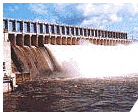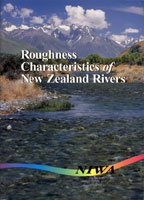

 |
 |
||||||
 The Only book of its kind on stream and creek restoration |
Roughness Characteristics of New Zealand Rivers $85 (US) Cat No: RCNZR AUTHORS: D.M. Hicks and P.D. Mason FORMAT: Softcover, 336 pages |
The previous edition of this publication has been referenced in every significant book on fluvial geomorphology and in hundreds of articles published since its original printing in 1991. The information presented is the culmination of a three-year field program in which roughness and other hydraulic parameters were measured. Physical and hydraulic characteristics are presented for 78 New Zealand river and canal reaches which may be used as reference reaches for estimating roughness coefficients in similar channels. These reaches, selected primarily to provide the broadest possible coverage of river size, cover a wide range of mean flow (ranging from 0.1 to 353 m3/s), slope (ranging from 0.00001 to 0.042), and bed material (ranging from silt, through sand, gravel, and boulders to bedrock). The information given for each reach includes 156 color photographs, cross-section and planform plots, bed and bank descriptions, bed surface material size gradings, plus tables and plots showing how the Manning and Chezy roughness coefficients vary with flow magnitude.
A second criterion was that reaches should -- as far as possible -- be typical slope-area reaches, conveying their flow uniformly through a single channel. Ideal characteristics of a slope-area reach are that:
(ii) its length is at least five times its width
(iii) it has uniform cross-sections or is converging
(iv) its flow is contained without overflow
(v) it has straight entrance and exit conditions, with no backwater effects.
Rarely, if ever, in the study reaches were all of these ideal conditions met. thus, the approach adopted is to present roughness information from real reaches that are as close as possible to uniform, and to include sufficient additional information so that readers can make their own assessment regarding uniformity and the extent to which a reference reach matches their prototype.
From the Table of Contents: Introduction - - Reach selection - - Field measurements - - Calculation of roughness coefficients and other parameters - - Errors and uncertainties - - Presentation of information - - How to use this book - - Quick method for selecting reference reaches - - Site information - - References - - Site index. ISBN 0-477-026008-7, Publ. 1999, NIWA.
© Copyright 2021. Water Resource Publications, LLC. All
rights reserved.
Colorado, USATelephone: 720-873-0171 / Fax: 720-873-0173
E-mail:
